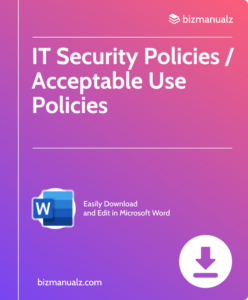CIO IT Infrastructure Resilience

Are you ready for anything that comes your way? As a CIO, ensuring the resilience of your IT infrastructure is crucial for the success of your company. From natural disasters to cyber attacks, your organization is vulnerable to various threats. In this article, we will explore the importance of IT infrastructure resilience and provide tips for maintaining it. CIO IT Infrastructure Resilience.
What Is CIO IT Infrastructure Resilience?
CIO IT infrastructure resilience refers to the ability of an organization’s IT systems and networks to withstand and quickly recover from disruptions or failures. It encompasses proactive measures such as redundancy, disaster recovery planning, and robust cybersecurity protocols to ensure uninterrupted operation and safeguarding of data.
Why Is CIO IT Infrastructure Resilience Important?
CIO IT infrastructure resilience is essential for maintaining seamless operations, protecting against cyber threats, and ensuring business continuity. It plays a crucial role in safeguarding data, applications, and systems from potential disruptions, minimizing downtime and financial losses.
This was particularly evident during the Y2K scare, when organizations prioritized fortifying their systems to withstand potential date-related issues, highlighting the pivotal importance of CIO IT infrastructure resilience.
What Are the Consequences of Not Having Resilient IT Infrastructure?
The consequences of not having resilient IT infrastructure can be severe, leading to prolonged system downtime, data loss, security breaches, and impaired business operations. These vulnerabilities can result in financial losses, damaged reputation, and legal implications.
Pro-tip: Regularly assess and update your IT infrastructure to ensure resilience against potential disruptions and threats.
What Are the Key Components of CIO IT Infrastructure Resilience?
As a Chief Information Officer (CIO), ensuring the resilience of your company’s IT infrastructure is a crucial responsibility. In order to maintain business continuity and protect against potential disruptions, it is essential to have a comprehensive understanding of the key components of IT infrastructure resilience.
In this section, we will discuss the importance of redundancy and backup systems, the necessity of a disaster recovery plan, and the critical role of cybersecurity measures in maintaining resilience. By examining these components, we can gain a better understanding of how to effectively safeguard our company’s IT infrastructure.
1. Redundancy and Backup Systems
When improving IT infrastructure resilience, CIOs should give priority to redundancy and backup systems by:
- Implementing duplicate hardware for critical components.
- Regularly backing up data to secure off-site locations.
- Utilizing cloud-based backup solutions for additional redundancy.
Fact: According to a study by Gartner, by 2023, 75% of businesses will face a major business disruption due to an IT security failure.
2. Disaster Recovery Plan
- Evaluate Risks: Identify potential threats and assess their potential impact on IT infrastructure.
- Develop Recovery Strategies: Formulate a detailed disaster recovery plan for data recovery, system restoration, and business continuity.
- Regular Testing: Conduct frequent tests to ensure the effectiveness of the disaster recovery plan.
- Training and Awareness: Educate employees about their roles and responsibilities during a disaster.
After a major cyberattack, a global financial institution swiftly enacted its disaster recovery plan, successfully restoring operations within hours and preventing significant data loss.
3. Cybersecurity Measures
- Implementing various cybersecurity measures such as firewalls, antivirus software, and intrusion detection systems to protect against cyber threats.
- Regularly updating security patches and software to address any vulnerabilities.
- Conducting employee training on best practices for cybersecurity and establishing clear security protocols.
How Can CIOs Improve IT Infrastructure Resilience?
As the backbone of any organization, the IT infrastructure must be resilient in the face of potential disruptions. CIOs play a crucial role in ensuring the continuity of IT operations, but how can they improve the resilience of their IT infrastructure?
In this section, we will discuss four key strategies that CIOs can implement to enhance IT infrastructure resilience. From conducting regular risk assessments to investing in robust technology, these tactics can help organizations stay prepared for any unexpected challenges. Additionally, we will explore the importance of training and educating employees on IT resilience to create a culture of proactive preparedness.
1. Regular Risk Assessments
- Identify and prioritize critical assets and processes.
- Assess potential threats and vulnerabilities regularly.
- Evaluate the impact of identified risks.
- Develop risk mitigation strategies.
- Implement monitoring and review mechanisms.
To ensure effective risk assessments, CIOs should engage cross-functional teams, leverage data analytics for predictive insights, and stay updated on emerging threats.
2. Implementing Business Continuity Plans
- Assess Vulnerabilities: Identify critical business processes, key resources, and potential disruptions.
- Create Response Strategies: Develop plans for various scenarios, including data breaches, natural disasters, and system failures, as part of implementing business continuity plans.
- Establish Communication Protocols: Define channels and procedures for internal and external communication during crises.
- Test and Refine Plans: Regularly evaluate and update continuity plans to ensure effectiveness.
3. Investing in Robust Technology
- Upgrade hardware and software to the latest resilient technology solutions.
- Implement cloud-based services for better scalability and redundancy.
- Integrate advanced cybersecurity measures to protect against evolving threats.
To enhance IT infrastructure resilience, CIOs should prioritize investing in robust technology that offers scalability, redundancy, and advanced security features.
4. Training and Educating Employees
- Educate employees on potential IT threats and best practices to mitigate risks.
- Conduct regular training sessions on cybersecurity protocols and safe online behavior.
- Empower staff to recognize phishing attempts and social engineering tactics.
- Provide resources for continuous learning and skill development to adapt to evolving technology and effectively train and educate employees.
What Are the Challenges of Achieving IT Infrastructure Resilience?
In today’s digital age, a strong and resilient IT infrastructure is crucial for businesses to thrive. However, achieving this level of resilience is not without its challenges. In this section, we will discuss the main obstacles that IT leaders face when trying to build and maintain a resilient IT infrastructure.
These challenges include budget constraints, lack of awareness and understanding, and the rapidly evolving technology landscape. By understanding these challenges, we can better prepare ourselves to overcome them and ensure the long-term success of our IT systems.
1. Budget Constraints
When dealing with budget constraints while aiming to improve IT infrastructure resilience, it is important to have a strategic plan and make resourceful decisions.
- Prioritize: Identify critical areas that require investment and focus resources on measures that will have the highest impact on resilience.
- Cost-effective solutions: Consider using open-source software, cloud-based services, and outsourcing options to minimize costs while still enhancing resilience.
- Risk assessment: Conduct thorough risk assessments to allocate resources efficiently and address any vulnerabilities within the limitations of the budget.
Despite facing budget constraints, CIOs can still enhance IT infrastructure resilience by prioritizing investments, exploring cost-effective solutions, and conducting thorough risk assessments.
2. Lack of Awareness and Understanding
Lack of awareness and understanding about IT infrastructure resilience can result in overlooking potential risks and vulnerabilities. For example, failing to recognize the significance of regular updates and patches may leave systems vulnerable to cybersecurity threats.
In fact, a survey conducted by a leading tech research firm found that 45% of organizations identified lack of awareness as a primary challenge in achieving IT infrastructure resilience.
3. Rapidly Evolving Technology
- Stay Informed: Continuously monitor industry developments and the rapidly evolving technology landscape.
- Adapt Quickly: Implement agile processes and flexible infrastructure to accommodate the constant changes in technology.
- Invest Wisely: Allocate resources for ongoing training and technology upgrades to keep pace with the ever-changing advancements.
How Can CIOs Measure the Resilience of Their IT Infrastructure?
- Assess system uptime: Monitor downtime incidents to gauge infrastructure reliability.
- Conduct risk analysis: Identify potential threats and vulnerabilities to the IT structure.
- Implement redundancy measures: Integrate backup systems and failover processes.
- Measure response time: Evaluate the speed and efficacy of incident response protocols.
- Regular testing: Perform stress tests and simulations to assess system endurance.
What Are Some Examples of Successful IT Infrastructure Resilience Strategies?
When choosing effective strategies for IT infrastructure resilience, it is important to consider options such as:
- cloud redundancy
- data encryption
- disaster recovery planning
These strategies are crucial in protecting against:
- data loss
- system downtime
- cyber threats
For instance, a company recently experienced a cyberattack but was able to quickly recover and resume operations thanks to their strong backup and recovery system, minimizing any disruptions to their services.
CIO IT Infrastructure Resilience
Resilient CIO IT infrastructure is crucial for preserving uninterrupted operations, safeguarding against online attacks, and guaranteeing business continuity. It is essential for preventing potential disruptions to data, apps, and systems, reducing downtime and financial losses.
Frequently Asked Questions

What is CIO IT Infrastructure Resilience?
CIO IT Infrastructure Resilience refers to the ability of an organization’s Information Technology (IT) infrastructure to withstand and recover from potential disruptions or disasters.
Why is CIO IT Infrastructure Resilience important?
Having a resilient IT infrastructure can help organizations minimize downtime, maintain business continuity, and protect critical data and systems from potential threats or disruptions.
What are some key components of CIO IT Infrastructure Resilience?
Some key components of CIO IT Infrastructure Resilience include backup and recovery systems, disaster recovery plans, risk assessments, and regular testing and monitoring of systems.
How can organizations improve their CIO IT Infrastructure Resilience?
Organizations can improve their CIO IT Infrastructure Resilience by implementing robust backup and recovery systems, regularly testing and updating disaster recovery plans, and conducting risk assessments to identify potential vulnerabilities.
What role does the Chief Information Officer (CIO) play in IT Infrastructure Resilience?
The CIO plays a crucial role in IT Infrastructure Resilience by overseeing the development and implementation of strategies and systems to ensure the organization’s IT infrastructure is resilient and able to withstand potential disruptions.
What are some potential threats to IT Infrastructure Resilience?
Potential threats to IT Infrastructure Resilience include natural disasters, cyberattacks, human error, hardware failures, and power outages.

















Leave a Reply